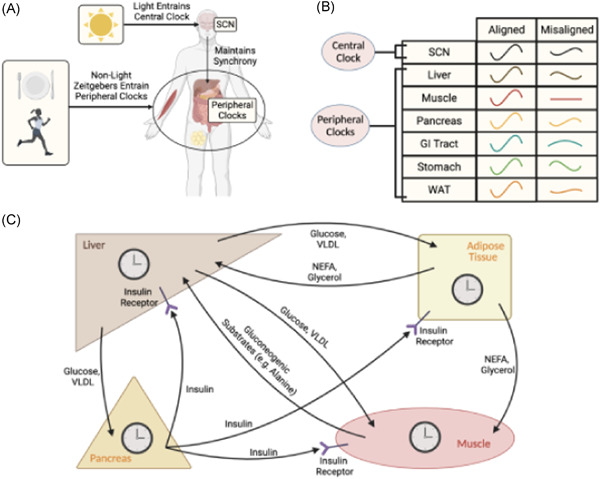Figure 4.

Circadian misalignment and its impact on carbohydrate metabolism. (A) Light and other zeitgebers must be aligned to maintain synchrony between central and peripheral clocks. (B) If synchrony is maintained, the circadian rhythm of the central SCN and peripheral clocks are in‐phase (see aligned condition). If our behavioural cycles do not align with external light cycles, then the amplitude of SCN circadian oscillations is lower, impairing SCN‐mediated anticipatory metabolic processes (e.g., cortisol, growth hormone release). This reduction in central rhythm amplitude as well as the mismatch in behavioural and external light cycles result in desynchrony between not only the SCN and peripheral clocks but also between the peripheral clocks (see misaligned condition). (C) Key metabolic organs are undergoing constant fluxes in metabolites, with different processes being favoured at different times (note: not all the fluxes are shown). This means misalignment across the activity of the organs, due to peripheral desynchrony between the circadian clocks, can impair metabolic function resulting in ectopic lipid accumulation as well as elevated levels of plasma glucose and TAG. Over longer periods of time this can lead to glucolipotoxicity, impairing β‐cell function. GI, gastrointestinal tract; SCN, suprachiasmatic nucleus; VLDL, very low‐density lipoprotein [Color figure can be viewed at wileyonlinelibrary.com]
